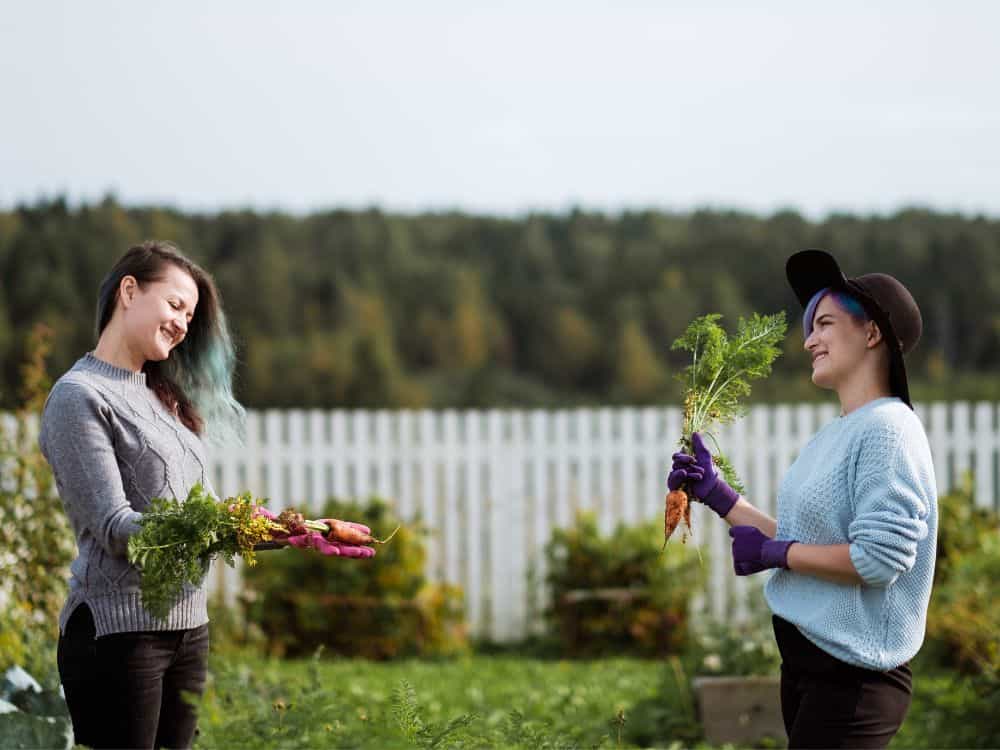In today’s fast-paced world, the allure of living self-sufficiently at home is growing stronger for many individuals. Whether driven by environmental concerns, a desire for independence, or simply the appeal of a simpler lifestyle, more people are exploring how to make their homes more self-sufficient. This article will provide a comprehensive guide on how to live self-sufficiently at home, offering practical tips and insights for every aspiring homesteader.

Understanding Self-Sufficiency
Before diving into the practical steps, it’s crucial to understand what self-sufficiency means. At its core, being self-sufficient means relying less on outside sources for your needs and being able to provide for yourself and your family. This can include growing your own food, generating your own energy, and managing your resources wisely.
The Benefits of Living Self-Sufficiently
The benefits of living a self-sufficient lifestyle are numerous. Not only does it offer greater independence, but it also promotes sustainability, reduces your carbon footprint, and often leads to a healthier lifestyle. Additionally, it can lead to significant cost savings over time.
Starting Your Self-Sufficient Journey
Growing Your Own Food
One of the most significant steps toward self-sufficiency is growing your own food. Whether you have a large yard or a small balcony, there are numerous ways to cultivate a garden that suits your space. Consider starting with easy-to-grow vegetables like tomatoes, lettuce, and herbs.
Preserving and Storing Food
Preserving food is an essential skill for anyone looking to live self-sufficiently. Techniques such as canning, freezing, and drying can help you store seasonal produce for year-round use. Check out this backyard homesteading guide for more tips.
Generating Your Own Energy
Solar Power
Investing in solar panels is a practical way to reduce your dependence on the grid. Solar power can be used to heat your home, generate electricity, and even power small appliances. It’s a sustainable option that can significantly lower your energy bills.
Wind Energy
If your location permits, wind energy can be another excellent source of power. While it requires a more significant investment, it can provide a steady supply of energy, especially in areas with consistent wind patterns.
Water Management
Rainwater Harvesting
Collecting rainwater is an effective way to reduce water usage and maintain a steady supply for gardening and other household needs. Installing rain barrels or a more extensive rainwater harvesting system can make a significant difference.
Water Conservation
Implementing water-saving techniques in your daily routine can further enhance your self-sufficient lifestyle. Consider low-flow toilets, water-efficient appliances, and mindful water usage habits.
Resource Management
Reducing Waste
Living self-sufficiently means minimizing waste wherever possible. Composting organic waste, recycling, and reusing materials are essential practices. For more ideas, explore this waste reduction guide.
Efficient Home Design
Designing your home to maximize efficiency can help reduce energy consumption and waste production. Insulating your home, using energy-efficient lighting, and incorporating passive solar design are effective strategies.
Building Skills for Self-Sufficiency
DIY Skills
Developing your do-it-yourself skills is invaluable for maintaining a self-sufficient home. Learning basic carpentry, plumbing, and electrical skills can save money and give you greater control over your home environment.
Cooking from Scratch
Cooking from scratch not only supports your self-sufficient lifestyle but also ensures you know exactly what goes into your meals. Experiment with new recipes, preserve your harvest, and enjoy the satisfaction of home-cooked meals.
Community and Self-Sufficiency
Sharing Resources
Living self-sufficiently doesn’t mean isolating yourself. Engaging with your community, sharing resources, and learning from others can enhance your journey. Consider joining local gardening clubs or attending workshops.
Supporting Local Businesses
Supporting local businesses and farmers can complement your self-sufficient efforts. Purchase local produce, support artisans, and contribute to the local economy.
Challenges and Solutions
Overcoming Obstacles
Embarking on a self-sufficient journey is not without challenges. However, with determination and creativity, these obstacles can be overcome. Stay informed, seek advice from experienced homesteaders, and remain flexible in your approach.
Finding Motivation
Staying motivated is crucial for long-term success. Set achievable goals, celebrate small victories, and remember the reasons why you chose to live self-sufficiently.
Conclusion
Living self-sufficiently at home is a rewarding and fulfilling lifestyle choice. By taking gradual steps, educating yourself, and remaining open to new ideas, you can create a more sustainable, independent, and enriching life. Whether you’re just starting or looking to deepen your self-sufficient practices, the journey is as important as the destination.

FAQ
What are the first steps to living self-sufficiently?
Start small by growing your own food, learning to preserve food, and reducing waste. Gradually expand your efforts as you gain confidence and skills.
Is living self-sufficiently expensive?
While some initial investments may be required, living self-sufficiently can save money in the long run by reducing utility costs and reliance on store-bought goods.
Can I live self-sufficiently in an urban area?
Yes, urban homesteading is possible with creative solutions like container gardening, rooftop solar panels, and community resource sharing. Explore this urban homesteading guide for more ideas.





